Hansa dishwasher does not drain water
 If you discover that your Hansa dishwasher does not drain water, do not panic ahead of time. In most cases, you can deal with the problem yourself. Therefore, you need to calm down, turn off the power to the machine and scoop out the liquid from the chamber. There can be two reasons for this problem - a blockage in the drain system or a failure of one of the PMM units. Let's figure out where to start diagnosing.
If you discover that your Hansa dishwasher does not drain water, do not panic ahead of time. In most cases, you can deal with the problem yourself. Therefore, you need to calm down, turn off the power to the machine and scoop out the liquid from the chamber. There can be two reasons for this problem - a blockage in the drain system or a failure of one of the PMM units. Let's figure out where to start diagnosing.
Why doesn't the equipment remove waste liquid?
There may be different reasons why the dishwasher does not drain water down the drain. Most problems can be fixed on your own. Incorrect drainage of waste fluid can be caused by:
- clogged drain hose;
- clogged filter unit of the machine;
- a failed pressure switch;
- burnt out pump;
- blockage in the siphon or sewer pipe;
- damaged control module.
You can clear the blockage in the drain system yourself, without the help of a professional.
If at first glance the reason for the incorrect operation of the dishwasher is unclear, you will have to “weed out” one guess after another. You should start with the simplest thing - inspecting the drain hose. Check if the sleeve is kinked. Feel it for blockages. If you can clearly feel a “garbage plug” inside, clean the corrugation using a long metal wire.
Next, the dishwasher garbage filter and drain pump are checked. If everything is fine here, the pressure switch will be next in line. We’ll tell you in more detail about all possible problems and how to deal with them yourself.
The culprit is a clog.
Most often, the dishwasher does not drain water down the drain due to a clogged garbage filter.It accumulates food debris, fruit pits, glass shards, pieces of napkins and other objects that have fallen inside the machine. The filter element is located at the bottom of the PMM washing chamber.
To clean the filter unit of a Hansa dishwasher, you will need:
- de-energize the equipment;
- scoop out the water that has accumulated in the dishwasher tray;
- remove the filter element.
Most modern dishwashers have not just one filter, but a whole filter assembly. It consists of:
- fine mesh fine filter;
- coarse filter;
- external mesh filter;
- supporting parts.
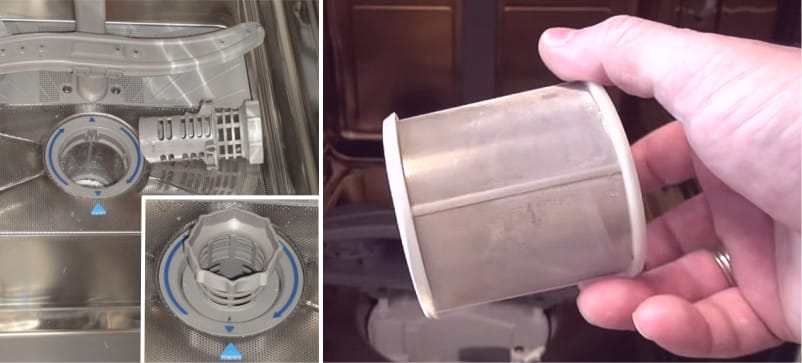
Having taken out the filter unit, it is necessary to disassemble it into its component parts. Each element is washed separately. If the parts are covered with a thick layer of limescale, it is better to soak them for several hours in water with the addition of citric acid or baking soda.
Be sure to clean the recess where the debris filter is inserted. Dirt and pieces of food also accumulate there. Having finished with the “cleaning”, assemble the unit and install it in place. Test the machine - if this does not help, then the problem needs to be looked for elsewhere.
It is recommended to clean the filter unit of your dishwasher at least once a month.
Next, you need to ensure that the sewer pipe and siphon are not clogged. Usually, if the riser is clogged, then the water does not drain well not only from the machine, but from the sink or bathtub. How to test this assumption:
- disconnect the PMM drain hose from the siphon;
- point the end of the corrugation into an empty container;
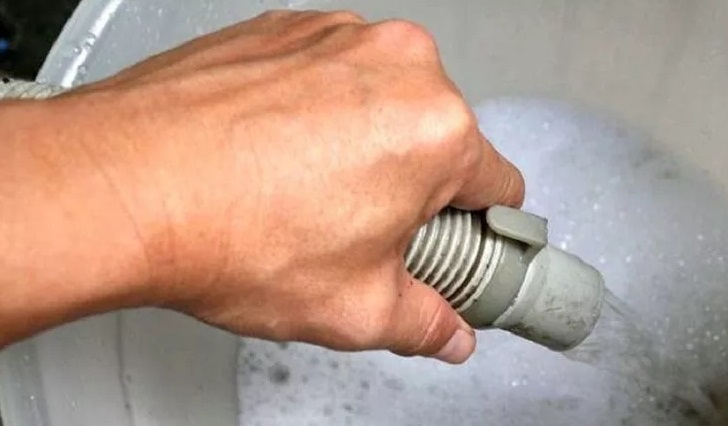
- run a short wash cycle;
- watch the machine work.
If the waste liquid remains in the washing chamber in this case, then the problem is not a blockage. But if the water starts to drain, you will have to clean the siphon.Arm yourself with rubber gloves, a dry rag, an empty container and start disassembling the device.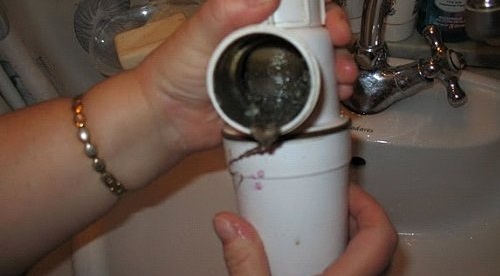
When you don’t have time to tinker with the siphon, you can try cleaning it with special store-bought products. Typically the dishwasher is connected to the outlet under the kitchen sink. Therefore, buy a special gel and pour it into the sink, following the instructions on the package.
It happens that a garbage plug forms not in the siphon, but in the sewer pipe. If the clog is deep enough, you will have to call a plumber. The technician will quickly fix the problem.
If the issue is not clogging of the drain system elements, you will have to check one by one the components of the dishwasher that are somehow involved in the process of removing water from the chamber. It is recommended to start with the pump. Next in line will be the pressure switch, followed by the control module.
The pump is not working well
The drain pump is responsible for pumping waste liquid from the washing chamber into the sewer system. What could happen to him? In some cases the pump burns out, in others it becomes clogged. To diagnose a part, you will need to remove it from the PMM body.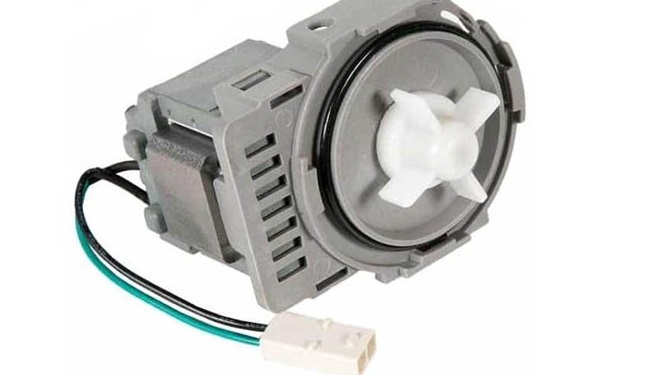
To get the pump, you need to partially disassemble the Hans PMM. You can lay the dishwasher on the floor and unscrew the tray. Some experts recommend removing not the bottom of the machine, but its side wall. You can choose a method more convenient for yourself.
Next, the drain pump must be removed from the machine. To do this, all pipes and wires are disconnected from it. Having taken out the pump, check the movement of the impeller - the blades should rotate freely.
Sometimes a foreign object, such as a piece of glass, can be found between the “petals” of the pump impeller. In such a situation, it is enough to clean the blades and put the pump back.
When the impeller is not damaged or blocked, check the pump for functionality. Use a multimeter to measure the resistance produced by the contacts of the drain pump. Normally it should be about 200 Ohms. If the readings are very different, the part will have to be replaced; it cannot be repaired.
To buy the right drain pump, you need to know the model of your Hansa dishwasher. You can also take the dismantled pump and go to the store with it, asking the seller to select an analogue. It is better to purchase original components.
Let's pay attention to the pressure switch
Another reason for this behavior of the PMM may be an incorrectly functioning pressure switch. It is necessary to determine the water level in the chamber and transmit this information to the main control module. If the sensor breaks, the dishwasher's electronic unit receives erroneous information.
The pressure switch may not work correctly due to the following:
- contacts are broken;
- wiring is damaged;
- the pressure hose is clogged;
- The sensor element is damaged.
The location of the level sensor in your Hans model should be indicated in the equipment instructions. Usually the pressure switch is installed at the bottom of the dishwasher. To check and, if necessary, replace the part, you will have to “crawl” into it.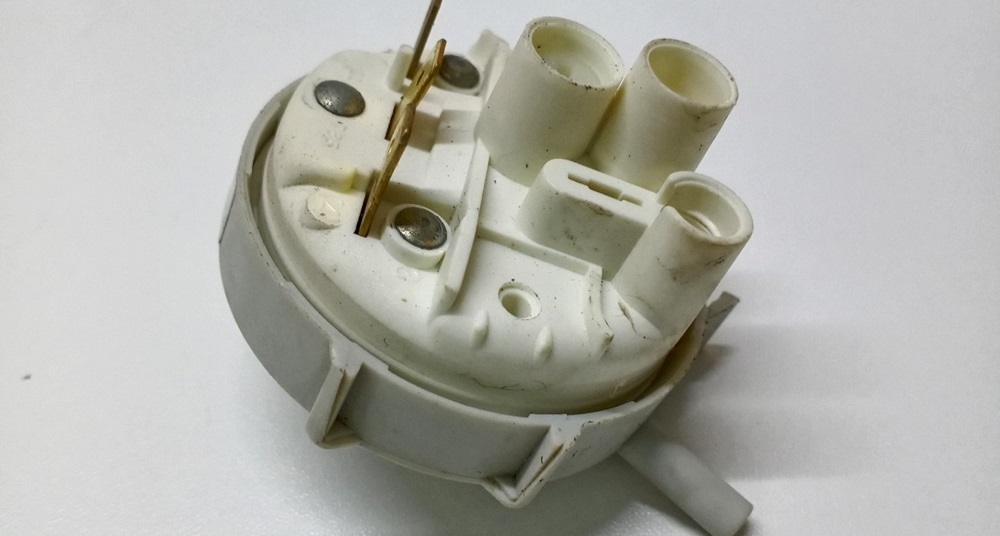
The algorithm of actions will be as follows:
- turn off the power to the dishwasher, disconnect it from the water supply and sewerage;
- cover the floor and place the machine on the back wall;
- remove the dishwasher tray;
- find the plastic box from which the tube comes out - there is a pressure switch nearby;
- Use pliers to disconnect the pipe from the tank;
- Check if the sensor is clogged.
Diagnostics of the mechanical part of the pressure switch is simple - just blow into the pressure hose.If you hear clicks, it means the device is working properly. The sensor electronics are checked with a multimeter.
What to do with a multimeter? Its probes are connected to the contacts of the pressure switch. If the tester screen displays 0, it means the water level sensor is working. If there is a malfunction, the device will have to be replaced. When purchasing components, be sure to focus on the model of your PMM.
And finally, the issue may be in the PMM software block. It is recommended to entrust diagnostics and repair of the electronic control module to specialists. This is a complex device, therefore, without sufficient experience and knowledge, you can only aggravate the situation.
Interesting:
Reader comments
- Share your opinion - leave a comment



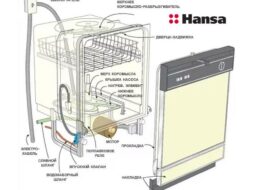
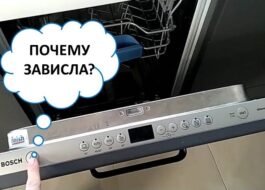

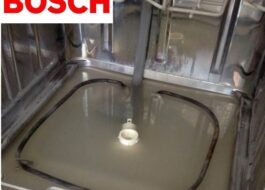














Add a comment